Our Locations
Experience Ocean Business Centre
10 reasons to visit Muscat, Oman
1. To test your bartering skills
Muscat’s Muttrah Souk is a labyrinth of ceramics, jewelry and camel-themed souvenirs. The best buys are butter-soft llama wool pashminas, leatherware and exquisite gold jewelry. Most stalls are open to bartering, but there’s less wiggle-room on jewelry (which is sold by weight). If you’re a haggling novice, start with an offer around 40–50 percent of the vendor’s opening price, and aim to meet somewhere in the middle. Sellers know their bottom line: if they’re happy to let you walk away from a sale, you’ve crossed it. For the best people-watching, arrive after 5pm when locals venture out for a good haggle.
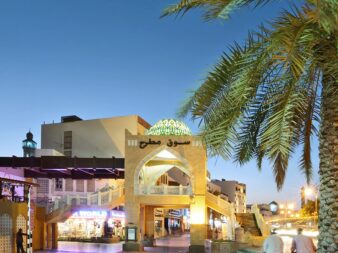
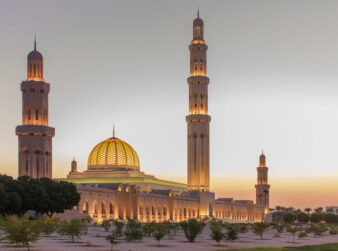
2. To see a remarkable mosque
During 45 years of rule, Oman’s Sultan Qaboos has lent his wealth and name to many of Muscat’s finest constructions. But the most remarkable is Sultan Qaboos Grand Mosque, which gleams from the tips of its four minarets and 50m-high gold dome right down to the white marble flooring. The men’s prayer hall (visitable by both sexes) is especially stunning, with vast Persian carpets and chandeliers the size of dune buggies. Male visitors should wear long sleeves and trousers, and women should cover from collarbones to below the knee, and bring a scarf to wrap your hair.
3. To glimpse Oman’s swashbuckling past
Swords and daggers are fundamental to Oman’s heritage, even enjoying pride of place on the national flag. Only Oman’s well-to-do wear the khanjar (traditional dagger) these days, but the craftsmanship remains revered. See an array of historic weaponry at the Bait Al Zubair Museum, from pearl-embossed straight swords to beauteous blades inscribed with koranic verses.
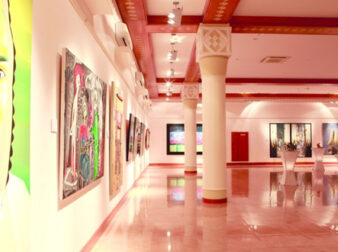
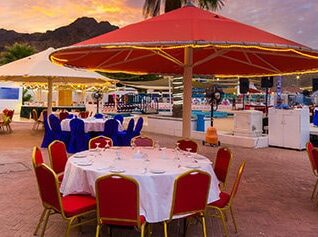
4. For the Gulf’s freshest seafood
While grilled meats, hummus and flatbreads are heaped onto many a restaurant table, Muscat is primarily a city of seafood lovers. The stand-out dish is kingfish curry, chunks of gamey fish simmered in a broth of coconut, turmeric, ginger and garlic, but fish is usually scooped out of the sea and freshly grilled. Feast on catch of the day with a view of bobbing yachts at the marina’s Blue Marlin restaurant. Even the most ravenous travelers will be satisfied by platters heaped with grilled tuna, prawns, kingfish and a whopping lobster.
5. For palatial modern architecture
A natural starting place to gaze at regal architecture is Al Alam Palace, a resplendent gold and blue royal residence. Next, discover the Royal Opera House, an admirable blend of Omani and Italian-imported marble and Burmese teak. It’s even worth poking your nose inside certain luxury hotels: the Al-Bustan Palace Hotel has an atrium the equal of many a museum, 38m high with a blend of art deco and lavish Arabian stylings.
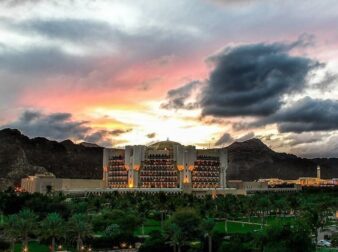
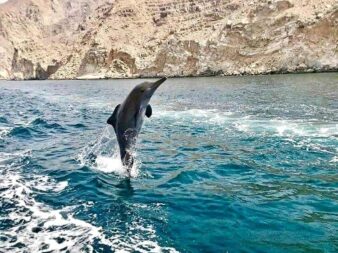
6. To watch cavorting dolphins
Applaud the mid-air acrobatics of spinner dolphins on a boat tour around the Gulf of Oman. As their name suggests, these little dolphins are known for dizzying mid-air pirouettes, as they hunt for tuna and sardines. Ocean Blue Oman has regular two-hour cruises, with great chances of seeing these playful cetaceans frolic in the water.
7. To access breathtaking hiking terrain
While the region’s most impressive hikes are accessed from Nizwa, a 90-minute drive southwest of Muscat, the capital itself is backed by the dramatic Hajar Mountains. Lace up your walking boots for the rocky C38 trail from Muscat’s Riyam Park into the hills; rewards for this two-hour exertion include bird’s eye views of the port and fortresses, and blissful mountain solitude. Hiking is at its best from October to April.
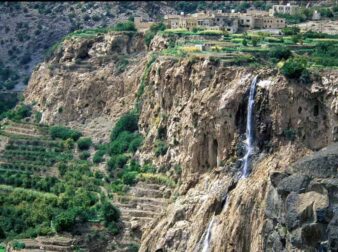
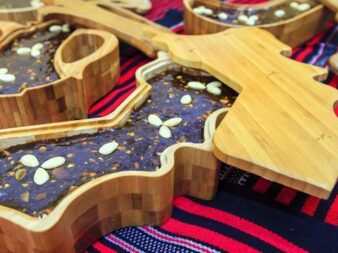
8. For sweet-toothed temptations
Guests to Omani homes are welcomed with cardamom-scented coffee and sticky dates. There are 35 varieties to enjoy, from caramel-like Khalas dates to darker, less sweet Farth dates; browse for your favorites at the fruit and vegetable markets at Sultan Qaboos Port. Another snack guaranteed to strike fear into your dentist’s heart is Omani halwa, a gelatinous treat boiled down from sugar, wheat starch and saffron (find it in Muttrah Souk).
9. To experience endless desert
West of Muscat, the world’s largest uninterrupted sand desert extends across the Arabian Peninsula. Covering not only parts of Oman but neighbouring Saudi Arabia, Yemen and the United Arab Emirates, Rub’ Al Khali (the ‘Empty Quarter’) is an estimated 583,000 square-kilometres of uninhabited dunes. Photographers are spellbound by the play of light on these rippling hillocks of sand, solitude-seekers venture here to camp under the stars, but it’s increasingly a destination for adventure travel. Desert tours by 4WD tour meander off-road tracks through the Hajar Mountains before taking a spin around the dunes (Viator offers day-trips from Muscat).

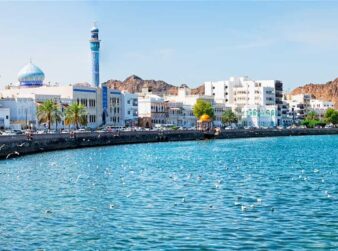
10. For sunset strolls along the Corniche
Muscat’s popular promenade winds from Sultan Qaboos Port east along the waterfront, following Al Bahri Road. One side of this picturesque path bypasses glittering shopfronts and sky-blue Al-Lawati Mosque; on the other, dhows (traditional sailing boats) sway in the Gulf of Oman. Spot bulky sixteenth-century Muttrah Fort along the walk, and a lookout tower in the shape of a giant incense burner, towering over verdant Riyam Park. Strolling along the Corniche is spectacular around sunset, when the sea glitters in hues of magenta and orange, and the Islamic call to prayer soars from minarets.
Contact Us
Get in touch now to receive the best services
© Copyrights : Ocean Business Centre @2018 – All rights reserved | Terms & Conditions
